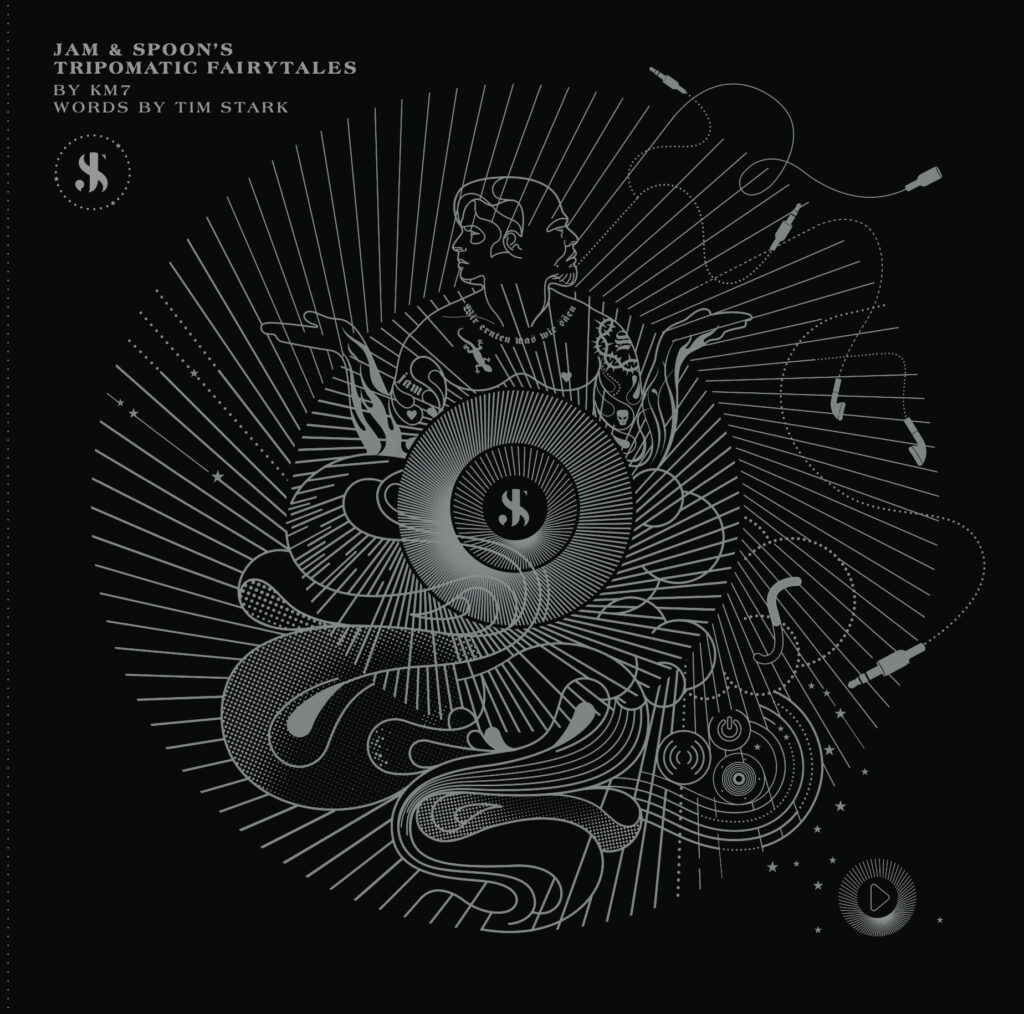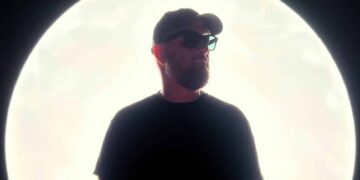It may be from the 1990s, but dance music would not be what it is today without Jam & Spoon’s first album, Tripomatic Fairytales 2001.
Few albums have lasting staying power these days. Few influence an industry after thirty years too, but Jam & Spoon’s Tripomatic Fairytales 2001 is one of them. As Black Hole Recordings looks to celebrate another of the album’s milestone anniversaries, let’s look back at the waves this pebble made in the dance music ocean.
First, a primer – Jam & Spoon, the duo of Jam El Mar (Rolf Ellmer) and Mark Spoon (Markus Löffel), formed in the early 1990s in the blossoming and eclectic German electronic scene. This was before the rise of titans like Armin van Buuren, Paul van Dyk, and Tiësto, before the household recognition of John O’Callaghan, Above & Beyond, Rank 1, or Ferry Corsten. It was the era of the death of cassette tapes, the rise of CDs as the musical medium to own, and the dawn of the true personal computer revolution. Certainly, computers were not a new invention, but having one in one’s home, with the power to create, was at its first cresting wave.
Emerge within 1993 – Jam & Spoon released their debut album, Tripomatic Fairytales 2001. Merging the oddity of a Producer/DJ duo, Jam took the lead role of producer, while Mark wheeled the steel himself in the clubs and discotechs of the world. The album was the collective production of the two together in the studio, usually after Mark spent the weekend teasing dance floors with hours of beats, bringing back what worked and what did not. It took both to craft the atmosphere that set a tone for dance music in the years to come, laying the foundations of a burgeoning trance music genre.
Tripomatic Fairytales 2001 established the pulse of an industry poised to “entrance” its listeners.
Tripomatic Fairytales 2001 is not simply an album of songs strung together for radio airplay. It is a listening experience designed to hook you in without being obtrusive with whatever you are doing. It makes your butt shimmy and your feet move but allows you the space to cook, write, or craft. In essence, it breathes into the space around you, offering you a sonic atmosphere to absorb into the moment. That was true during the album’s creative process, too.
“Odyssey to Anyoona” playfully blends ethnic chants with the jangle of percussion and a bass line groove along with an echoed piano riff for a core melody. Haphazard as it sounds, it slides in subtle beauty. “Stella” flirts with ’80s house motifs but crafts it into the style of a Sunset Strip drive, bridging the world towards the flanged peaks and valleys that characterized trance in years to come. “Operating Spaceship Earth” playfully bounces between the sounds of a baby and young children with vocalized noises from a child’s toy or early computer text to speech. This babbling experiment teased the art of circuit bending and found sound, later used by BT in writing his most experimental works, such as those on This Binary Universe.
Simplicity and found sounds play key parts in the album’s creativity.
Yes, the final works use the multiplicity of layered sounds to construct each track, but that formula alone misses the point. Elements and selections here are far more stripped back and nuanced, and the limitations are more apparent than today’s music. Creativity and experimentation came from playing with single parameters within a synthesizer and layering them repeatedly.
“Neurotrance Adventures” dazzles with this incredible simplicity. The first two minutes of the song feature one vocal line (“I love you”) and one synthesizer – repetitively strumming a sequence of notes between relative frequencies. Jam & Spoon play with tempo as the key element, not melody or rhythm – and in such a manner, entrance the listener’s mind into a sonic journey the rest of the way.
It would be remised to leave out the Bohemian influence of Ibiza during this era and how it permeates beyond the party culture of nightclubs.
“Stella” uses a guitar element that feels like it’s right at home off the sunset shore outside Café del Mar. “Who Opened the Door to Nowhere” similarly offers the atmosphere of the sunset in Ibiza, the unfamiliar getaway of one’s mind eye-opening to new horizons. The vocoded spoken word over synthesizers and atmospheric sweeps plays with the live performer atmosphere of 1990s Café del Mar and Café Mambo.
Of course, the Spanish influence plays in the album’s biggest hit “Right in the Night (Fall in Love with Music).” The hurried tempo that underlies the Spanish guitar and castanets plays to the island’s influence on escape that the blossoming dance music scene offered. The original version lacked vocals when it first left the studio console, but the duo knew, creatively, they had something special. As recounted in the book attached to the special anniversary, Mark Spoon dove into his address book, found the right name, sent a cassette out for some practice sessions, and then the magic happened.
It’s worth pointing out that the impact of the album’s energy remains apparent even in today’s market. “Path of Harmony” clearly touched on aspects of Juno Reactor’s music. Antiloop sampled the album heavily in their initial long-play – “Neurotrance Adventures” provides the sample for Antiloop’s “I Love You,” and “Paradise Garage” offers the “You can’t keep me from you baby” vocal line for their track “Nowhere to Hide.”
There are parallels elsewhere as well. Catching this author’s ear is an influence (if not perhaps an uncredited sample) in the back catalog of Armin van Buuren, too. Particularly the influence of “Stella” on Sander van Doorn’s use of the two-note stab in his remix of Armin’s “Control Freak.” It shows how the album makes music flourish beyond its own sonic bounds.
It is also fun to see how other producers shaped some of the sounds of this album. There is a clear influence of Giorgio Moroder on the track “Paradise Garage.” Of course, that track plays homage to the New York club of the same name – and the energy of the disco era. Still – perhaps most ironically, given what’s happening in the techno market today – what’s old is new.
Forgetting the roots of our culture and the simpler sounds of yesteryear is far too easy.
That said, not honoring the past is a sad injustice to the artists who broke barriers and a failure to understand that dance music is more than partying and that the roots of the culture are still true today. Here, in the 1990s, was a culture that broke through by establishing a safe space for everyone – regardless of creed, orientation, or ethnicity – to be their own self. Here, artists took on the mantle of new technology and methods to craft sonic soundtracks for the masses.
Jam & Spoon’s Tripomatic Fairytales 2001, originally released in 1993 and reissued over the past decades more than once, remains emblematic of how dance music culture evolved. Celebrating 30 years of the album’s influence is important. It showcases the energy of an early dance music scene. It authors, perhaps ironically, similar sounds that many of today’s fans in the markets of melodic techno will thoroughly enjoy.
In celebrating the 2023 anniversary of 30 years of the album, Arny Bink and the crew at Black Hole Recordings have put together a limited 1,000-copy run celebration package. The package contains four CDs (three remastered copies of the album’s various releases and a CD of reworks) and a book curated and written by Tim Stark & KM7. This is a limited item, so expect the quality to be very high. If you want a copy, head to the Magik Muzik shop and reserve it today, as the release date is October 19.

Follow Black Hole Recordings:
Website | Facebook | Twitter | Instagram | SoundCloud | YouTube








